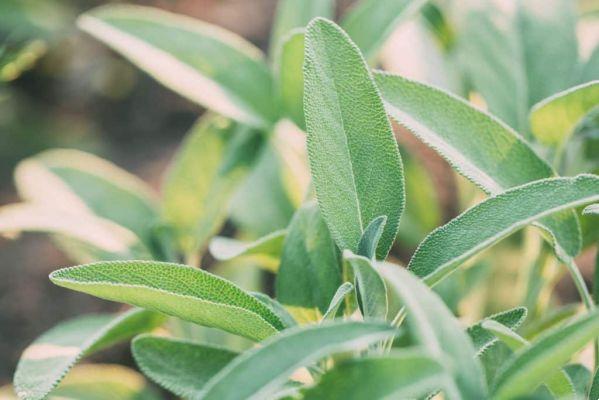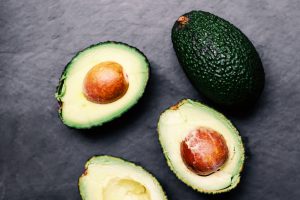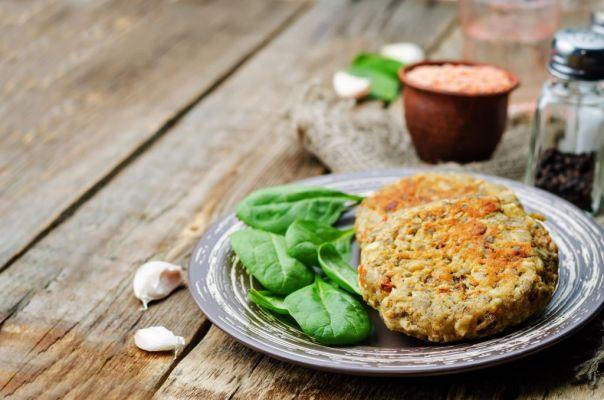Sage is a plant in the mint family, along with other herbs such as oregano, rosemary, basil and thyme. Salvia derives its name from the Latin salvere, which means to save or heal. During the Middle Ages this herb had a reputation for having medicinal properties and was used to help prevent the bubonic plague or the black plague. In fact, sage has antibacterial and antifungal properties that help to sterilize food. It is still used by many cultures in rituals of bodily and spiritual purification.
Due to its reputation as a plant that our ancestors used frequently when seeking cognitive improvement, there are now several studies to test this theory. In almost all cases, in both long-term and short-term studies in animals and humans, the evidence is strong and supports this hypothesis.
Packed with nutrients, just one teaspoon (0.7g) of sage contains 10% of the Daily Value for Vitamin K and about 1% of the Daily Value for Vitamin B6, Iron, Calcium and Manganese. For so little volume, sage concentrates a high dose of essential micronutrients for the body.
Sage also has a substantial array of neuronutrients: 160 distinct polyphenols, flavonoids and phenolic acids. These compounds are powerful antioxidants that help balance cholesterol, reduce cancer risk, and protect the brain against oxidative stress and beta amyloid plaque buildup that leads to dementia and cancer in later life.
In addition to being a powerful anti-inflammatory, antioxidant and acting in the prevention of Alzheimer's, sage stands out for its ability to improve short- and long-term memory, even in healthy young people after a single dose.
Several studies point to the ability to improve content retention and response speed. Between 2003 and 2005, groups of researchers tested volunteers of different ages, administering increasing doses of sage extract and testing their cognitive ability with different tests.
You may also like
- Discover the best herbs to have at home
- Find out which anti-inflammatory herbs can cure you
- Identify the herbs that protect you from Alzheimer's
The studies had standardized memory tests that measured the performance of volunteers before sage consumption and 1, 2.5, 4 and 6 hours after consumption. In all tests after consumption, even at the lowest dosages, the test results were better. The highlight of the improvement was in relation to memory speed, in which the participant has to remember written or spoken words immediately and after different time intervals.
One of the explanations for this cognitive improvement is the suppression of AChE, an enzyme that catabolizes, that is, destroys, the neurotransmitter acetylcholine. This neurotransmitter is important in synapses related to attention, memory, learning and motivation. Acetylcholine also helps modulate the brain to enter a state of restful deep sleep.
In one such study, participants were also subjectively assessed for their mood after consumption. At higher doses, participants reported being more alert, calm and satisfied. At the lowest dosages, only the calm state scores were higher.
Summary of benefits for the mind:
- 160 different antioxidant polyphenols protect the brain against oxidative stress
- AChE enzyme suppression increases acetylcholine levels
- Timely use improves cognitive function and memory speed
- Possible correlation with improved mood and alertness
There are many other spices, which you may already know, that have benefits for memory, attention, mood and disposition. Find out more with the free eBook 6 Spices for the Mind.

Ideas for including sage in your diet:
My favorite way to use sage is to incorporate it into butter and have a compound butter that I can use in a variety of dishes. Sage butter is a classic culinary combination of flavors.
- Melt a 200g bar of butter over low heat.
- Chop 20-30g of fresh sage and add the melted butter
- Do not let the butter boil, keep the heat low and turn off if necessary.
- Infuse sage for 5-10 minutes
- Pour the liquid butter into a container without straining the sage
- Let cool and use in other dishes and preparations.
You can also take the opportunity to incorporate other seasonings in this butter, such as garlic, black pepper and rosemary.
Sage, both dried and fresh, can also be used to flavor tomato-based sauces, creamy soups, and meats.
References:
https://link.springer.com/article/10.1007/s40268-016-0157-5
https://pubmed.ncbi.nlm.nih.gov/12895685/
https://pubmed.ncbi.nlm.nih.gov/18350281/
https://pubmed.ncbi.nlm.nih.gov/12895683/
https://onlinelibrary.wiley.com/doi/abs/10.1046/j.1365-2710.2003.00463.x
https://pubmed.ncbi.nlm.nih.gov/15639154/
https://pubmed.ncbi.nlm.nih.gov/12605619/
https://pubmed.ncbi.nlm.nih.gov/28301805/

























